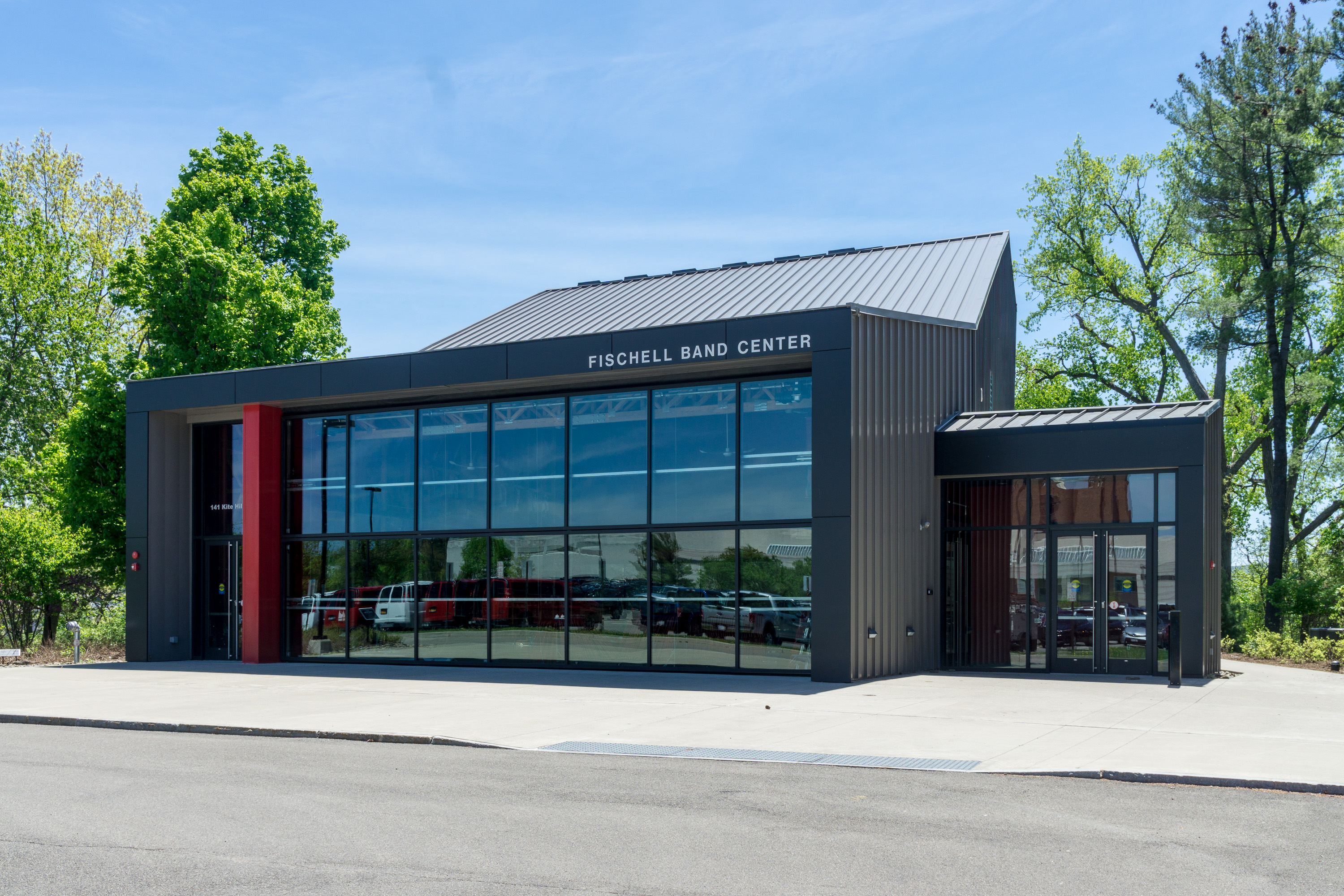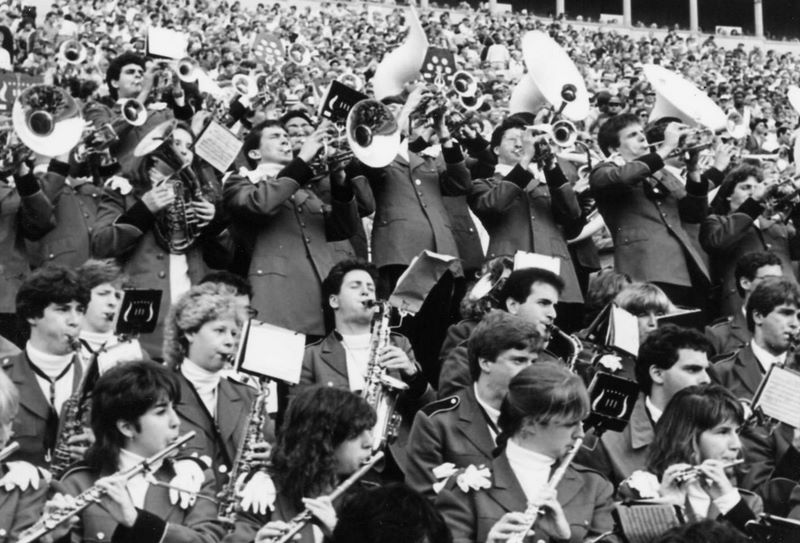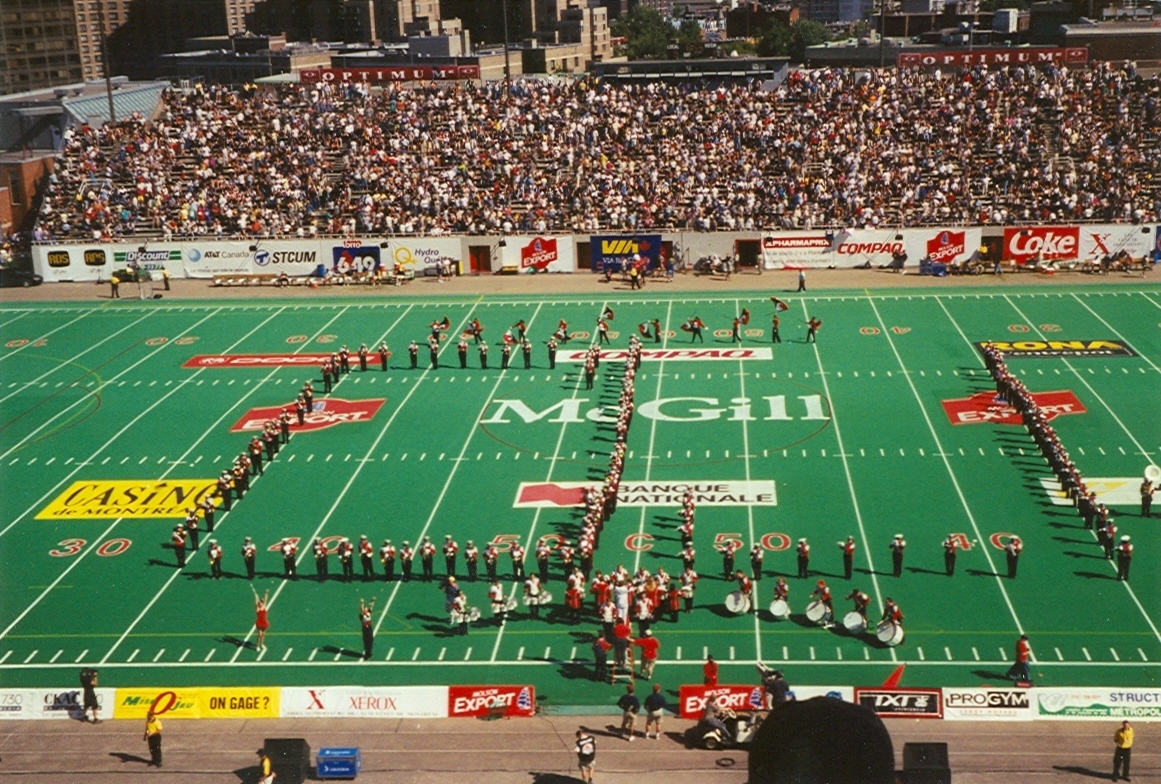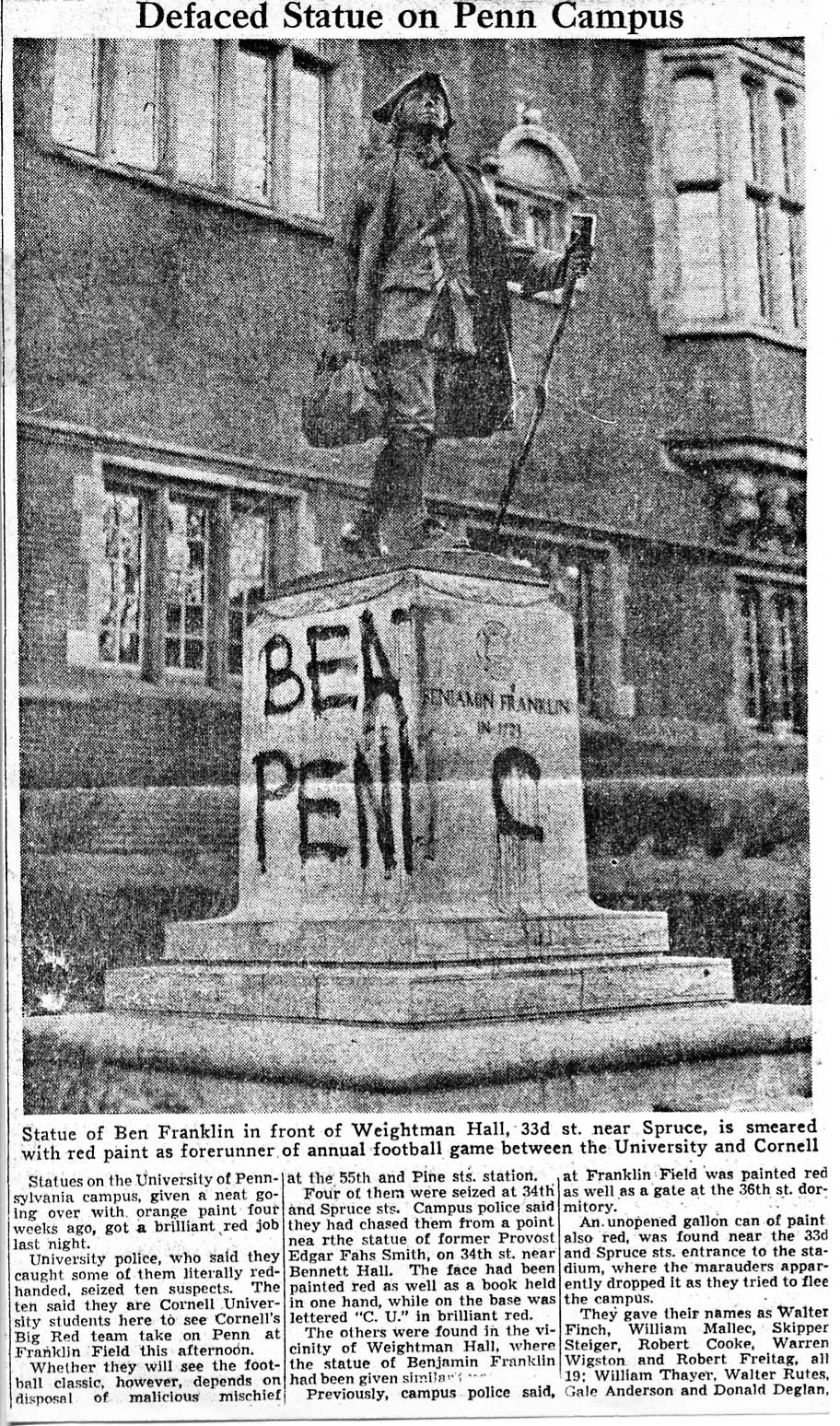History
The Big Red Band has a long history...
Over 125 years! In fact, this history is so long and storied that a comprehensive
chronicle of it does not exist. So why should this page be any different? Therefore, if you have any
tidbit to offer, please click on contact us and send us an e-mail. We hope to continually add to it
and one day make this page complete. We can then throw in some black and white pictures, publish it
in hardcopy, and rake in the millions that await us. Yeah.
Many changes have taken place that have radically (or sometimes not-so-radically) altered the
overall identity and attitude of the Band. Included here are but brief samplings of our past.

Fischell Band Center
For most of its history, the BRMB’s home was in Barton Hall. Originally a branch of Cornell’s ROTC program, the Band was given a space in what had once served as the Military Science building. As the Band grew in number and fame, it started to become clear that they were outgrowing the cramped and under-ventilated space where they practiced. In 2011, alumni David Fischell ('75, M.S. '78, Ph.D. '80) and his wife Sarah Thole Fischell ('78, M.Eng. '79) spearheaded a project to design and build a new home for the Band. With the Fischell family starting the project off with the lead gift, the Big Red Bands Alumni Association raised the remaining funds needed to complete the building through many generous alumni contributions. The Fischell Band Center opened in 2013 and has served as the home of the Big Red Marching and Pep Bands ever since.
Power to the students
With the retirement of Professor Stith, Scott Jeneary came aboard as Big Red Band Music Director in 1989, and the position was later restructured and renamed Music Advisor. Today, our Music Advisor is a graduate student from Ithaca College. In the last twenty years or so, the Band has become not only the largest student-run group in the Ivy League, but also the MOST student-run, as decisions and tasks formerly carried out by "directors" became the direct responsibilities of the students (outlined in the Band's Constitution, written in 1997), right down to budgets, expenditures, drill writing, and even arranging music! David Conn was music advisor from 1995 to 2002, James Miller took over from 2003 to 2005, followed by Erin Otto for the 2006 season. Thomas P. LaFalce Jr.'94 was the Athletics Advisor from 1996 to 2004. Our current advisor, Megan Ramey, is ever-helpful, but always seeks to empower the student leadership that characterizes the only REAL Marching Band in the Ivy League!!!


BRBAA
The most significant addition to the Band in the last thirty years has been the Big Red Bands Alumni Association in 1982. The BRBAA was founded as a way to maintain the financial and long-term security of the Band. Since then, the BRBAA has become one of the most active alumni groups on the Hill! No description of this time in Band history would be complete without mentioning Band advisor Georgian Leonard, who spearheaded the first annual phonathon.
The vision of Greg Pearson
Bill Welker '73 resurrected the Drum Major uniform for his two years at the helm. The Band continued its tradition of truly entertaining shows and musical excellence. In 1971, the Band welcomed the talents of new Assistant Director Greg Pearson. He had a definite vision for how he wanted the Band to sound, from his arrangement of pre-game and halftime shows, to his decision to switch the Band to the crescent side of the field. Even though we were no longer with our friends in the student section, there is no question that the Band sounded better with the concrete background and height offered by the crescent.


Leaving the military
These changes would significantly alter the face of the Band as we know it, almost as much as splitting from ROTC! As the BRMB left its military roots, it evolved more and more from its early years. The Band remained all-male until 1970, when women were first admitted. From then on, the BRMB increasingly became a social organization, leading to the family-like atmosphere that pervades it today.
The beginning
The Band was first formed in the 1890's as a part of the Reserve Officer's Training Corps program. It remained under ROTC jurisdiction until 1948, at which time it became affiliated with the Cornell Concert Band and the Cornell Repertory Band under the name Cornell Bands. The Director of Bands from 1947 to 1965, William Campbell, and Assistant Director and Drillmaster (in the late '50s), Henry Romersa, oversaw this change. Also crucial in these "silver age" Bands were Nick Krukovsky, '65, for many years the official cameraman/movie editor for the Band, and Ernie Hardy, just to name a few. His successor, Marice Stith, guided the Band through even more changes from 1966 to 1989.






 This picture reproduced with permission of University
Photography. It originally appeared on the front page of the Cornell Chronicle, October
20, 2005. Pictured is Susie James '04, Tori Ball '05 and Lora Root '04.5
This picture reproduced with permission of University
Photography. It originally appeared on the front page of the Cornell Chronicle, October
20, 2005. Pictured is Susie James '04, Tori Ball '05 and Lora Root '04.5


